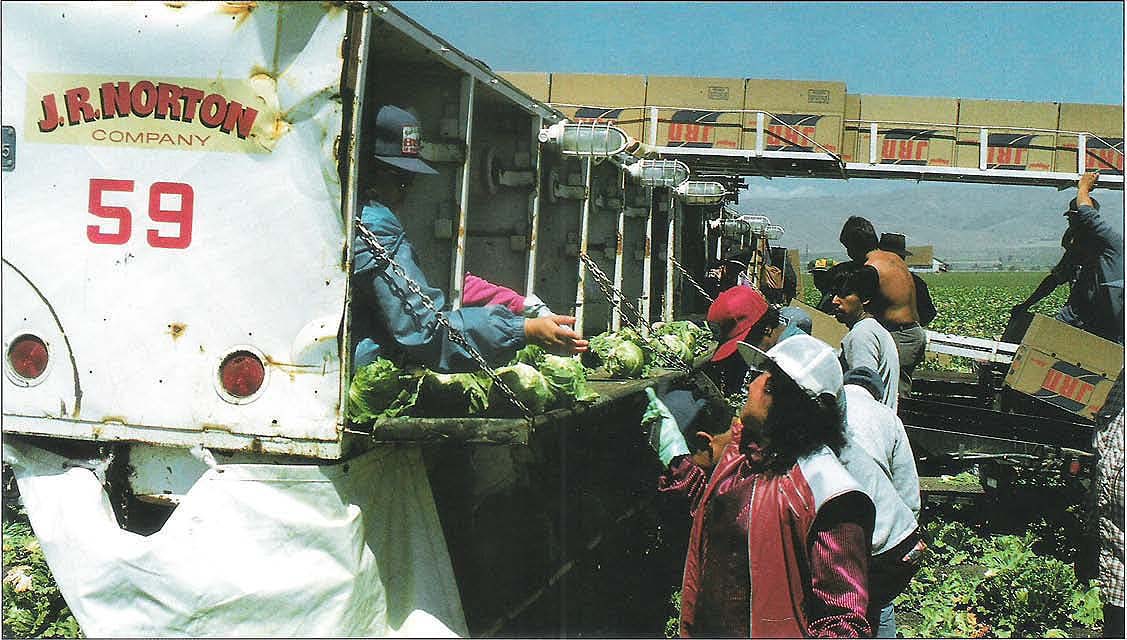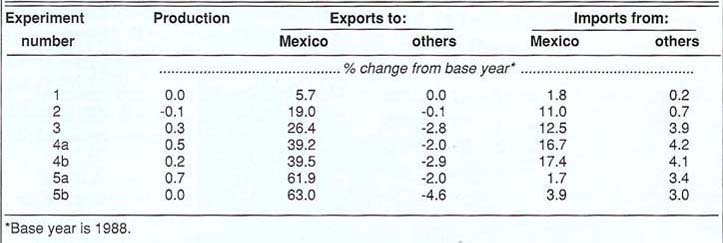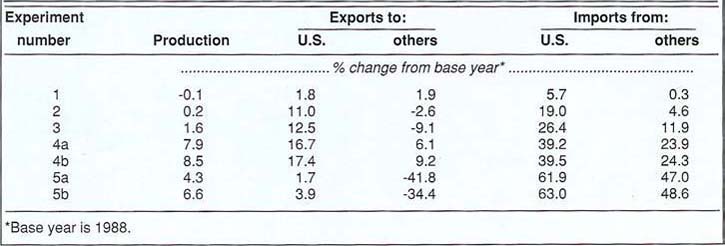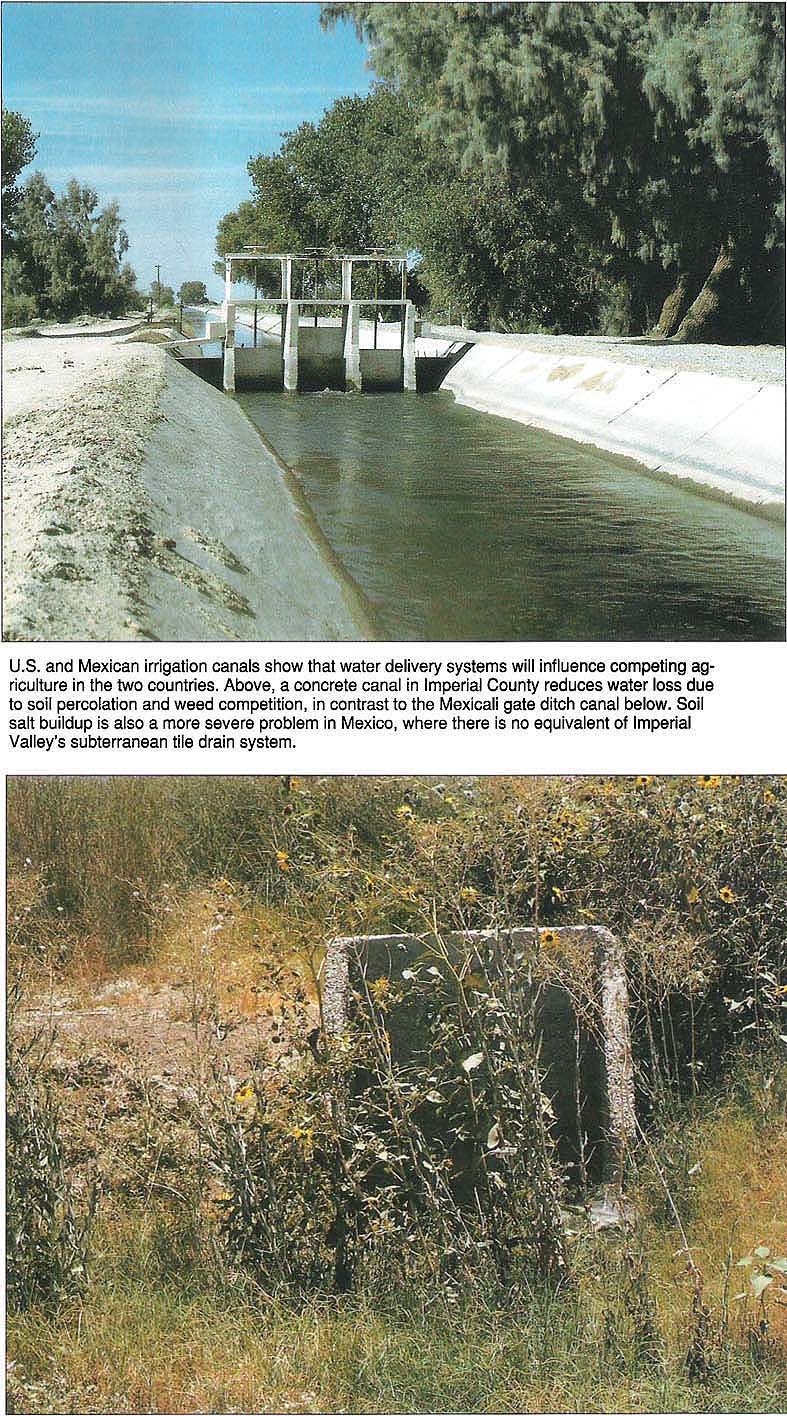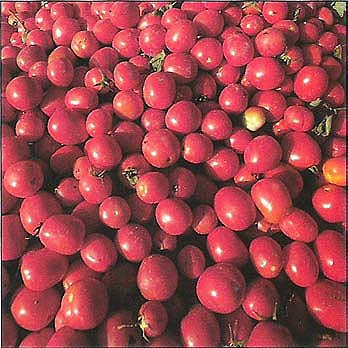All Issues
Free trade with Mexico: economic impacts
Publication Information
California Agriculture 45(5):5-10.
Published September 01, 1991
PDF | Citation | Permissions
Abstract
Economic models show that the U.S. will benefit economically from a free trade agreement (FTA), but Mexico is likely to benefit more. The creation of an FTA will result in the movement of labor and capital across sectors in both economies. The benefits to Mexico will be augmented if significant economic development occurs as a result of the agreement. The FTA is likely to cause a reduction or change in the mix of California horticultural products directly competitive with Mexico. (See sidebar, p. 7.) Market opportunities are expected to develop for other products.
Full text
Workers harvest lettuce near Watsonville. If U.S. tariffs are lowered through a free trade agreement, Mexican lettuce and other specialty crops will become more competitive with those of the U.S.
Discussions concerning a North American Free Trade Agreement pose important choices for Mexico, Canada and the United States on how best to manage their economic relations in an environment of increasing global internationalization and competition. Mexico is poised for a potentially complementary integration with its more developed Northern neighbors. The U.S. administration has decided that a successful Mexico transition that leads to growth and political stability is in the national security interests of the U.S. Mexico's ability to move to a sustained pattern of efficient growth is seen as the best chance for the maintenance of political stability.
If the transition is successful, it is argued, there will also be important economic benefits to the U.S. However, there will also be adjustment costs, and these will have to be addressed politically. U.S. labor unions and affected producer groups fear that they will be forced to absorb dislocation costs without compensation. Unless some form of adjustment assistance is established, opposition of this type can be expected to continue throughout the negotiation process. In addition, there are concerns that a free trade agreement (FTA) will allow U.S. firms to move production to Mexico to take advantage of what are perceived to be more lax labor and environmental standards. In a recent shift of position, the U.S. administration has agreed with Congress on the need to address environmental regulation and labor concerns. This indicates recognition that the constituency which has raised these issues must be included in the negotiation process.
From the Mexican perspective, President Carlos Salinas de Gortari has argued that the central challenge to successful implementation of an FTA is is that of providing economic benefits to Mexican society throughout the period of transition to new growth. There must be sufficient employment and real wage growth so that broad elements of the. Mexican nation will support the continued pursuit of the new development strategy. Mexico is still faced with severe development needs which must be addressed to avoid potentially dangerous regional and social polarization, as well as continued environmental degradation, both urban and rural.
Editor's note: This article and the accompanying sidebar are drawn from a 1991 study by Hinojosa-Ojeda and Robinson, “Alternative Scenarios of U.S.-Mexico Integration: A Computable General Equilibrium Approach,” and from Moulton's analysis of horticultural industries in Mexico and California.
In addressing these challenges, Mexico starts with a relatively high level of industrialization and a skilled work force, which can provide the foundation for a dramatic economic transformation. The stated policy of President Salinas, who took office in 1988, is to reverse Mexico's historic inward-looking development strategy and to pursue on outward-oriented strategy, following the lead of successful semi-industrial countries such as South Korea, Taiwan, Turkey, and Spain.
While there are lessons to be drawn from the experience of other semi-industrial countries, especially Spain's entry into the Common Market, there are many unique aspects to Mexico's situation. The success of the new strategy for Mexico in terms of sustainable growth and equitable income distribution will depend on the mix of trade, financial, and labor market policies that accompany a medium-term adjustment in the North American region. Institutionally, the formation of an FTA is a modest step. Managing environmental impacts, employment conditions, and disparities in regional development will require a greater degree of harmonization and institution building than is currently being considered in FTA negotiations.
This article focuses on the potential economic impact of the creation of an FTA on the U.S. and Mexican economies and on their economic relations. In addition to analyzing the impact of removing trade barriers, we also consider changes in migration, capital flow, and productivity that might accompany the creation of an FTA.
Methods
For the empirical analysis, we developed a three-country, seven-sector, trade-focused, computable general equilibrium (CGE) model which includes the U.S., Mexico, and the rest of the world. We use the model as a policy laboratory, doing a variety of experiments under various trade, capital, productivity, and migration scenarios.
A CGE model provides a means to evaluate an economy's operation. It incorporates the profit-maximizing behavior of the principal economic actors, as well as the actions of government agencies that make rules affecting market performance, collect taxes and tariffs, and dispense services. The model imposes market-clearing conditions that establish equilibrium prices for commodities, labor and the other factors included. It simultaneously solves for supplies, demands, prices and incomes.
CGE models are particularly well-suited for studying interdependent economies and trade liberalization. In common with all empirical economic models, however, they must be used with care. The results should not be viewed as “forecasts,” but instead to indicate the potential impact of different policy choices and external shocks. Starting with a model that captures the relevant structure and operation of the two economies, the empirical results are nonetheless conditional on a host of assumptions about the external environment and policy choices. This type of model is especially valuable in capturing the important mechanisms through which policy changes affect the two economies in the medium to long run, and in tracing out the empirical importance of links between them. Through a series of “what if” experiments, the model can be used to analyze the sensitivity of each country's economy to changes in policies and in the external environment.
General results
The general conclusions from the empirical experiments with the FTA-CGE model are:
TABLE 1. Estimated changes in U.S. agricultural sector arising from different assumptions about free trade and development
TABLE 2. Estimated changes in Mexico's agricultural sector arising from different assumptions about free trade and development
Specific results
The results of various economic experiments using the computable general equilibrium model are shown for the agricultural sector in tables 1 and 2. Those for the other sectors were recorded as well and are detailed in Hinojosa-Ojeda and Robinson's 1991 study ( see Editor's note, p. 5 ). The results are reported as a percentage change in production and trade from base year (1988) levels. The seven experiments involve progressive steps in the reduction of-barriers, increases in productivity and capital, and the easing of migration restrictions. They are summarized as follows:
If experiments 1 (tariff removal) and 2 (tariff and nontariff barrier removal) indicated all the changes that would affect the agricultural sectors of the two countries, the exercise would hardly seem worth the trouble. The existing tariff and nontariff trade barriers between the two countries are relatively small for most sectors, and one would not expect large aggregate effects from removing them. The experiments do indicate that the removal of non tariff barriers would have a greater trade effect than removal of tariffs alone. The major benefits from the creation of an FTA will come from effects which are likely linked to trade liberalization, but do not arise simply from changing relative prices, as happens when removing tariffs. Trade liberalization should be seen as a necessary, but by no means sufficient, condition for achieving the potential benefits of an FTA.
U.S. and Mexican irrigation canals show that water delivery systems will influence competing agriculture in the two countries. Above, a concrete canal in Imperial County reduces water loss due to soil percolation and weed competition, in contrast to the Mexicali gate ditch canal below. Soil salt buildup is also a more severe problem in Mexico, where there is no equivalent of Imperial Valley's subterranean tile drain system.
An increase in productivity is part of the development process and is assumed in experiment 3. It should lead to lower prices and increased trade and income. The agricultural trade benefit appears to favor the United States more than Mexico, since U.S. exports to Mexico increase more than Mexican exports to the United States. Production in Mexico, however, would increase more than under the preceding scenarios. An increase in Mexican economic growth relative to the United States and the related increase in capital stocks might also be expected in the development process.
Experiments 4 and 5 illustrate what might happen under two growth assumptions each with two migration conditions attached. The two sets of migration assumptions in the “a” and “b” experiments represent extremes and should bracket actual behavior. The largest growth rate assumption (experiment 4) leads to the greatest increase in agricultural production in Mexico and the greatest level of agricultural exports from Mexico. What is of particular interest to U.S. agricultural groups is that the percentage increase in U.S. agricultural exports to Mexico would be greater than that for Mexican agricultural exports to the United States. The transition growth rate experiment, number 5, results in lower production and export changes in Mexico than in the United States. The liberalization of migration restrictions in the CGE model experiments results in greater production in Mexico because of an increase in the agricultural labor force due to back migration, but does not change U.S. poduction Liberalization results in greater two-way trade as well.
The results of these experiments support what is generally believed: that the FT A, if it is part of a general development process, will lead to expanded agricultural production and trade. The United States would appear to gain from the export opportunities created by an improved economy in Mexico.
What can safely be concluded from the migration results is that the formation of an FTA will generate pressure for back migration or, in a dynamic setting, for reduced migration. These results also indicate that migrants are good for the U.S. economy. Both migration experiments showed an increase in wages for U.S. rural and unskilled workers, as did the trade liberalization and the dynamic growth experiments. Experiments based on greater growth for Mexico and increased capital stocks showed a slight reduction in U.S. rural wages, but these reductions were reversed when migration was liberalized. Skilled and white collar wages in the U.S. increased as well (except for a 0.2% decline for skilled workers in experiment 5b.) While consistent with trade theory, these spillover effects into other labor markets are quite small.
The model neglects potential dynamic countervailing forces such as induced changes in technology to economize on the use of scarce factors, which might easily offset the spillover effects in the medium run. (Current research by Robinson and Hinojosa-Ojeda shows that complete liberalization of the maize sector in Mexico would cause a profound increase in emigration to the United States resulting from lost employment in that sector. If current migration patterns prevail, California would receive an important share of that immigration.)
Conclusion
A robust result from our empirical analysis is that the creation of a free trade area (FTA) between Mexico and the U.S. can significantly benefit both countries, if it is accompanied by other policies that enable Mexico to shift to an open development strategy and achieve renewed growth based on increased trade with the U.S. The success of an open development strategy, however, depends on many factors. The creation of an FTA is a necessary part of Mexico's policy shift, but will not by itself suffice to guarantee success. While Mexico stands to gain relatively more than the U.S., given the relative importance of the FTA to the two economies, the downside risk for Mexico is also great. If it fails to achieve the transition to a new development strategy, it faces further economic stagnation, with increasing political and social unrest. The short-term down-side economic risk for the U.S. is very small since our empirical results indicate that the impact of the creation of an FTA on the U.S. economy, assuming no other changes in Mexico, is tiny. In the longer run, however, if Mexico fails to achieve a transition to an open development strategy, the economic risks for the U.S. are greater.
The impact on California's agricultural sector is less clear. It will not follow the pattern of the U.S. agricultural sector, set forth in table 1, because of the substantial difference in product mix. The horticultural sector will experience a reduction in output or shift in production mix for commodities directly competitive with Mexico's products. In those sectors where production seasons are complementary, little or no effect is likely. As Mexico's economy grows, there will be long-run opportunities for California's horticultural products in Mexico's “off-season” markets. Overall, the FTA alone is not likely to have much of an impact because relatively little of California's agricultural output is affected by trade with Mexico. However, the economic growth that may accompany the FTA should generate long-term trade opportunities that will be attractive to California.
Finally, it is worth noting that, in analyzing the impact of a comprehensive change in policy, it is usually worthwhile to use a variety of approaches. In terms of aggregation, CGE models represent a “mezzo” approach, falling between detailed micro studies of particular industries and macro models which focus on broad aggregates. Their strength is in capturing general equilibrium linkages that work through the operation of markets in the medium to long run. Micro and macro studies are potentially complementary, focusing on somewhat different issues.
Using models to analyze the economic consequences of establishing a U.S. Mexico FTA is fraught with difficulties. Policy makers are never satisfied, economic advisors rarely make unconditional recommendations, and academic economists talk constantly of assumptions and caveats. Our preliminary work indicates that multi-country CGE models can provide a useful framework for analyzing important links between policy changes and economic performance. Our FTA-CGE model incorporates some advances in state-of-the-art trade modelling, but our results also indicate that there is much yet to be done and many possibilities for improvement in the modelling framework.
The tomato processing industry has expanded more rapidly in Mexico than the fresh tomato industry. Export of tomato paste to the United States has doubled since 1986 and will increase still further when the US. tariff is eliminated under the Free Trade Agreement (FTA). This will permit Mexico to displace other suppliers to the U.S. market (such as Chile, Turkey and Taiwan). It will probably cause lower prices for U.S. producers as well.
(Editor's note: Most tonnage statistics in this paper are in metric tons. In a few cases, U.S. tons have been used, and so designated. For conversion purposes, 1 metric ton = 2,205 lb; 1 U.S. ton =2,000 lb.)
Tomato production in Mexico is an important component of Mexico's agricultural production and more particularly, of its agricultural exports. Most of the output is destined for fresh markets in Mexico and the United States; about 20% is used for processing. In 1989, for example, 947,000 metric tons (mt) were shipped to domestic fresh markets, 361,000 mt were exported, and another 318,000 mt were processed in Mexico. Fresh tomatoes account for 10% of total agricultural exports and are the first or second most valuable export, depending on the year. Processed tomato products account for less than 1% of these exports. This disparity is reflected in U.S. imports from Mexico during the same year: $223 million for fresh tomato imports and $17 million for processed.
However, during the 1980s the tomato processing sector grew much more rapidly than the fresh sector in Mexico and almost three times as fast as the processing sector in the United States. Despite this change, most attention in the United States has focused on competition in fresh tomato markets and how it might be impacted by the proposed North American Free Trade



